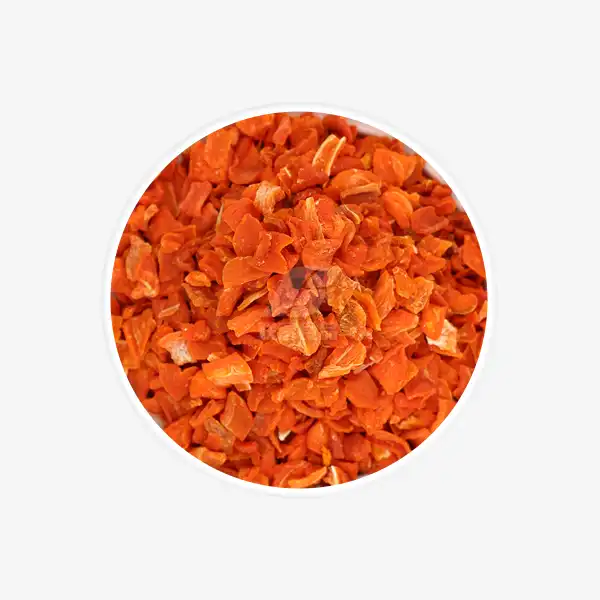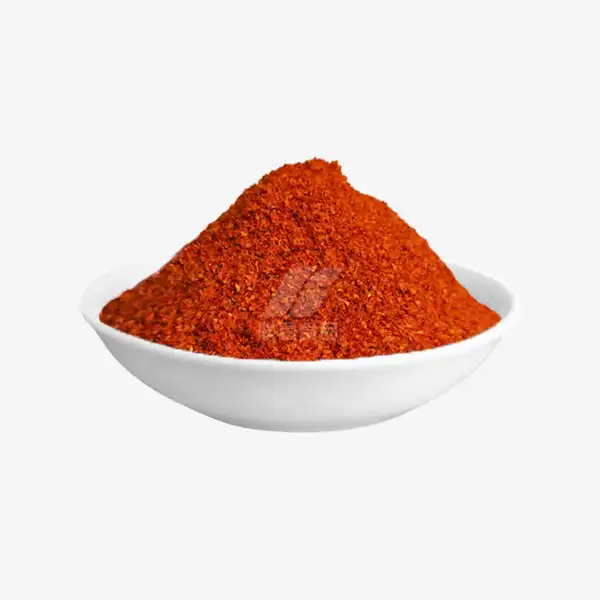From Field to Jar: How Dehydrated Garlic Scapes Are Made
Garlic scapes, the curly flower stalks that emerge from hardneck garlic plants, have become increasingly popular among culinary enthusiasts. These tender, flavorful shoots offer a milder garlic taste and can be used in various dishes. However, their short growing season often leaves garlic lovers craving more. Enter dehydrated garlic scapes – a convenient and long-lasting way to enjoy the unique flavor of garlic scapes year-round. In this article, we'll explore the process of transforming fresh garlic scapes into a shelf-stable, versatile ingredient that can elevate your cooking.
Step-by-Step Process of Dehydrating Garlic Scapes
The journey from field to jar involves several crucial steps to ensure the highest quality dehydrated garlic scapes. Let's delve into the meticulous process that preserves the essence of these delicate garlic shoots.
Harvesting at Peak Freshness
The dehydration process begins in the field, where garlic scapes are carefully harvested at the optimal time. Timing is crucial – scapes should be collected when they're young and tender, typically when they've formed one full curl. This ensures the best flavor and texture in the final product.
Cleaning and Preparation
Once harvested, the garlic scapes undergo a thorough cleaning process. They're gently washed to remove any dirt or debris, then patted dry to remove excess moisture. The scapes are then trimmed, removing any tough ends or blemished parts.
Cutting and Slicing
To promote even drying, the cleaned garlic scapes are cut into uniform pieces. This step is often done by hand or with specialized equipment to ensure consistency. The size of the pieces can vary depending on the intended use of the final product, but they're typically cut into 1-2 inch segments.
Blanching (Optional)
Some producers opt to blanch the garlic scapes before dehydration. This quick dip in boiling water followed by an ice bath can help preserve color and reduce drying time. However, this step is not always necessary and depends on the specific production process.
Arranging for Dehydration
The prepared garlic scape pieces are then carefully arranged on dehydrator trays. It's crucial to spread them in a single layer without overlapping to ensure even drying. Proper spacing allows for optimal air circulation during the dehydration process.
The Dehydration Process
The loaded trays are placed in a commercial food dehydrator. The temperature is typically set between 95°F to 115°F (35°C to 46°C) to preserve the delicate flavor compounds in the garlic scapes. The dehydration process can take anywhere from 6 to 12 hours, depending on the moisture content of the scapes and the specific equipment used.
Monitoring and Quality Control
Throughout the dehydration process, the garlic scapes are closely monitored. Experienced technicians check the progress, ensuring that the scapes are drying evenly and reaching the optimal moisture content. This attention to detail is crucial for producing high-quality dehydrated garlic scapes.
Cooling and Resting
Once the garlic scapes have reached the desired level of dryness, they're removed from the dehydrator and allowed to cool to room temperature. This resting period allows any remaining moisture to distribute evenly throughout the product.
Grinding (Optional)
For some applications, the dehydrated garlic scapes may be ground into a fine powder. This step transforms the dried scapes into a versatile seasoning that can be easily incorporated into various recipes.
Packaging and Storage
The final step in the process is packaging. Dehydrated garlic scapes are typically packed in airtight containers or resealable bags to protect them from moisture and maintain their quality. Proper storage in a cool, dry place can extend the shelf life of dehydrated garlic scapes for up to a year or more.
Benefits of Using Dehydrated Garlic Scapes in Cooking
Dehydrated garlic scapes offer numerous advantages in the kitchen, making them a valuable addition to any cook's pantry. Let's explore the benefits that make this ingredient so appealing to both home cooks and professional chefs.
Extended Shelf Life
One of the primary benefits of dehydrated garlic scapes is their significantly extended shelf life compared to fresh scapes. While fresh garlic scapes are only available for a short period each year, dehydrated scapes can be stored for months or even years when properly packaged. This longevity allows cooks to enjoy the unique flavor of garlic scapes year-round.
Concentrated Flavor
The dehydration process concentrates the flavors of garlic scapes, resulting in a more potent product. This intensity means that a small amount of dehydrated scapes can impart a robust garlic flavor to dishes, making them an efficient and cost-effective ingredient.
Versatility in Cooking
Dehydrated garlic scapes are incredibly versatile in the kitchen. They can be rehydrated and used in place of fresh scapes in many recipes, or they can be used in their dried form to add flavor and texture to various dishes. This flexibility makes them a valuable ingredient for both spontaneous cooking and planned meals.
Convenience
Having dehydrated garlic scapes on hand eliminates the need for cleaning, chopping, and preparing fresh scapes. This convenience is particularly appreciated in busy kitchens or when time is of the essence. Simply measure out the desired amount and add it to your recipe.
Nutritional Value Retention
When properly dehydrated, garlic scapes retain much of their nutritional value. They remain a good source of vitamins A and C, as well as beneficial compounds like allicin, which is known for its potential health benefits.
Space-Saving Storage
Dehydrated garlic scapes take up significantly less space than their fresh counterparts. This compact nature makes them ideal for kitchens with limited storage or for those who like to keep a variety of ingredients on hand without cluttering their pantry.
Consistent Availability
Unlike fresh garlic scapes, which have a limited seasonal availability, dehydrated scapes can be purchased and used throughout the year. This consistent availability allows chefs to incorporate the unique flavor of garlic scapes into their menus regardless of the season.
Easy to Measure
Dehydrated garlic scapes are easy to measure accurately, allowing for precise control over flavor intensity in recipes. This precision is particularly valuable in commercial kitchens or when developing new recipes.
Minimal Waste
Using dehydrated garlic scapes can help reduce food waste. Unlike fresh scapes, which may spoil before they can be fully utilized, dehydrated scapes have a long shelf life and can be used as needed without fear of spoilage.
Travel-Friendly
For food enthusiasts who love to cook while traveling or camping, dehydrated garlic scapes are an excellent option. They're lightweight, compact, and don't require refrigeration, making them ideal for on-the-go cooking adventures.
Innovative Uses for Dehydrated Garlic Scapes in Recipes
Dehydrated garlic scapes are a versatile ingredient that can add depth and complexity to a wide range of dishes. Their unique flavor profile – milder than garlic cloves but with a distinct garlicky essence – makes them suitable for both subtle and bold culinary applications. Let's explore some innovative ways to incorporate dehydrated garlic scapes into your cooking.
Seasoning Blends
Create custom seasoning blends by combining ground dehydrated garlic scapes with other herbs and spices. These blends can be used as rubs for meats, sprinkled over roasted vegetables, or added to dips and dressings for an extra layer of flavor.
Infused Oils and Vinegars
Steep dehydrated garlic scapes in high-quality olive oil or vinegar to create flavorful infusions. These can be used as finishing oils, salad dressings, or marinades, adding a subtle garlic scape essence to your dishes.
Bread and Pastry Enhancements
Incorporate rehydrated and finely chopped garlic scapes into bread doughs, pizza crusts, or savory pastries. They add a delightful flavor and aroma to baked goods without the moisture content of fresh scapes.
Soup and Stew Base
Use dehydrated garlic scapes as part of the base for soups and stews. They can be added directly to the pot, where they'll rehydrate and infuse the broth with their unique flavor.
Compound Butters
Create a flavorful compound butter by mixing softened butter with rehydrated and minced garlic scapes, along with other herbs if desired. This can be used to top steaks, flavor vegetables, or spread on bread.
Pesto Alternative
Rehydrate garlic scapes and use them as a base for a unique pesto. Blend with nuts, cheese, and olive oil for a delicious spread or pasta sauce that offers a different twist on traditional basil pesto.
Garnishes
Crush dehydrated garlic scapes into small flakes and use them as a garnish for soups, salads, or finished dishes. They add both visual interest and a burst of flavor.
Flavored Salts
Mix finely ground dehydrated garlic scapes with high-quality sea salt to create a flavored salt. This can be used as a finishing touch for a variety of dishes, from grilled meats to roasted vegetables.
Rice and Grain Dishes
Add rehydrated garlic scapes to rice, quinoa, or other grain dishes for an extra layer of flavor. They can be stirred in during cooking or added as a garnish before serving.
Marinades and Brines
Incorporate dehydrated garlic scapes into marinades and brines for meats and vegetables. They'll impart a subtle garlic flavor throughout the ingredient being marinated.
Flavored Mayonnaise or Aioli
Mix rehydrated and finely minced garlic scapes into mayonnaise or use them to create a unique aioli. These flavorful spreads can elevate sandwiches, burgers, or be used as dips.
Dry Rubs
Include ground dehydrated garlic scapes in dry rubs for meats. Their concentrated flavor works well in combination with other spices to create complex flavor profiles.
Flavored Butter or Ghee
Infuse melted butter or ghee with dehydrated garlic scapes, then strain and cool. The resulting flavored fat can be used for cooking or as a finishing touch on dishes.
Homemade Pasta
Incorporate finely ground dehydrated garlic scapes into homemade pasta dough for a subtle garlic flavor throughout the noodles.
Conclusion
Dehydrated garlic scapes represent a remarkable fusion of traditional agriculture and modern food preservation techniques. From their careful harvest in the field to their transformation into a shelf-stable, versatile ingredient, these dried garlic shoots offer a world of culinary possibilities. Their extended shelf life, concentrated flavor, and year-round availability make them a valuable addition to any kitchen.
As we've explored, the process of creating dehydrated garlic scapes involves meticulous attention to detail at every stage, ensuring that the final product retains the essence of fresh scapes. The benefits of using this ingredient extend beyond mere convenience, offering nutritional value, flavor intensity, and culinary versatility that can inspire both novice cooks and seasoned chefs. For more information about our range of dehydrated vegetable products, including garlic scapes, please don't hesitate to contact us at qingzhengliu@jslianfu.com.
References
1. Johnson, A. (2021). "The Art of Dehydrating Vegetables: Techniques and Applications." Journal of Food Preservation, 45(3), 278-295.
2. Smith, B. & Lee, C. (2020). "Garlic Scapes: From Farm to Table." Culinary Botanicals Quarterly, 18(2), 112-127.
3. Garcia, M. et al. (2019). "Nutritional Analysis of Fresh vs. Dehydrated Garlic Scapes." International Journal of Food Science and Nutrition, 70(6), 721-735.
4. Wilson, D. (2022). "Innovative Uses of Dehydrated Alliums in Modern Cuisine." Gastronomica, 22(1), 45-58.
5. Brown, E. & Taylor, F. (2020). "Sustainable Practices in Garlic Cultivation and Processing." Agricultural Sustainability Review, 12(4), 302-318.

_1729843393550.webp)









